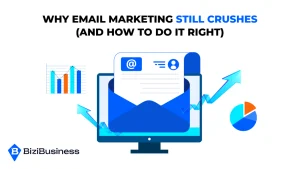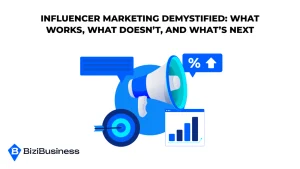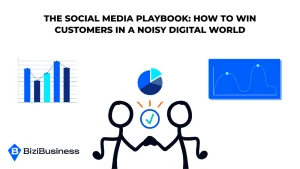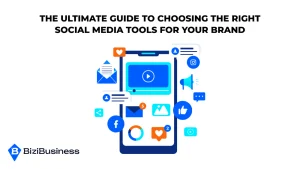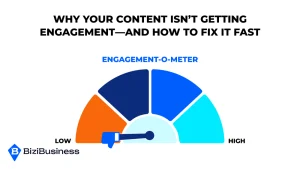BiziTopics
The E-Commerce Marketer’s Guide to UGC: Reviews, Reels & Real Results
BiziBusiness
Jul 8, 2025
14 min read
In today’s world of scrolls, swipes, and split-second decisions, customers don’t just want to hear from your brand—they want proof from real people. That’s where User-Generated Content (UGC) comes in.
Whether it’s a glowing review, a TikTok unboxing, or an off-the-cuff Instagram story from a happy customer, UGC is the modern-day word-of-mouth. It feels real. It builds trust. And most importantly—it drives conversions.
E-commerce brands that embrace UGC are seeing massive wins:
Higher click-through rates, lower customer acquisition costs, and better SEO rankings, all while building deeper brand loyalty.
But here’s the kicker—UGC isn’t just about reposting a customer’s photo and calling it a day. To truly leverage its power, you need a strategy. One that weaves UGC into every step of the customer journey—from discovery to checkout and beyond.
Why UGC Is Exploding in E-Commerce
We’re living in an era of authenticity-first marketing. And in e-commerce, that means one thing: user-generated content is king.
The Psychology Behind UGC’s Power
Consumers are tired of being sold to. They’ve seen every polished ad, staged product demo, and picture-perfect campaign. What they crave now is relatability—real people, real opinions, and real results.
That’s why UGC works so well. It taps into social proof, the psychological phenomenon where people follow the actions of others to make decisions—especially when uncertainty is high.
When potential customers see others just like them using and loving your product, it builds trust faster than any ad copy ever could.
The Numbers Don’t Lie
Here’s why marketers everywhere are going all-in on UGC:
- 84% of people trust online reviews as much as personal recommendations
- UGC-based ads get 4x higher click-through rates than traditional branded ads
- Websites with UGC see 29% higher conversion rates on average
- Brands using UGC in email campaigns see a 73% increase in click-through rates
(Source: Nielsen, Yotpo, Bazaarvoice)
The SEO Bonus
UGC isn’t just a conversion booster—it’s an SEO weapon, too.
- Fresh, keyword-rich content: Reviewers naturally use long-tail keywords and conversational language that aligns with how real customers search.
- Reduced bounce rates: Authentic content increases time-on-site, signaling value to search engines.
- Rich snippets & ratings: Review stars and user questions can enhance your listings directly on Google.
With Google constantly evolving its algorithm (hello, 600+ updates a year), content that’s dynamic, authentic, and valuable gets rewarded.
Where to Use UGC in Your Customer Journey
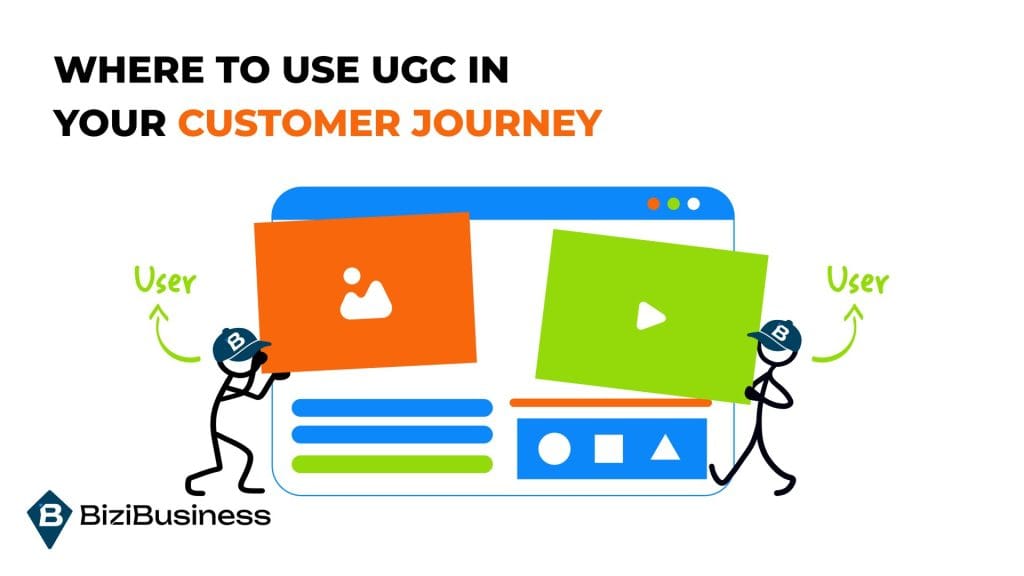
Because collecting great content is only half the battle.
Too many brands gather amazing UGC… and then let it collect dust.
But here’s the truth: Where you place your UGC is just as important as the content itself.
To maximize impact, you need to embed it throughout your customer journey—from the first impression to post-purchase nurturing. Let’s map it out:
Homepage & Landing Pages
First impressions matter. When a shopper lands on your site, seeing real people using your products builds trust immediately.
What works:
- Featured customer testimonials or video snippets
- UGC carousels that showcase happy customers
- TikTok/Reel-style auto-play videos above the fold
Why it matters:
New visitors need proof your brand delivers. Strategic UGC here reduces bounce rate and encourages deeper browsing.
Product Detail Pages (PDPs)
This is the decision point. Buyers are evaluating features, comparing products, and asking, “Is this really worth it?”
Add:
- Review sections with filters (star rating, keyword, photo/video)
- Customer-submitted videos/images in the product gallery
- FAQ/Q&A powered by real user responses
Why it matters:
UGC here directly reduces hesitation, answers objections, and boosts confidence—especially with visuals from people who look like them.
Cart & Checkout Pages
This is where cold feet happen. But the right reassurance can stop abandoned carts in their tracks.
Drop in:
- Small review quotes or trust badges (“Loved by 15,000+ customers”)
- UGC social proof (“@username just checked out with this bundle”)
- “Last chance to share your unboxing and get 10% off your next order!”
Why it matters:
In the most critical moment, positive reinforcement from other buyers can tip the scale toward conversion.
Email Flows
Your email list is one of your most powerful assets—and UGC makes it even stronger.
Use in:
- Abandon cart emails: Add a review or unboxing video
- Welcome emails: Feature real stories from new customers
- Post-purchase flows: Showcase how others use the product
- Re-engagement: “See how other customers are loving XYZ”
Why it matters:
Email doesn’t need to feel robotic. Adding UGC makes your emails more human—and higher performing.
Paid Ads & Social Retargeting
Forget polished product shots. Raw UGC is crushing it in paid ads.
Try:
- TikToks with “first impressions”
- Instagram Reels from everyday users
- Screenshot reviews with scroll-stopping headlines
Why it matters:
UGC-based ads outperform branded content because they feel real—not like ads. This is especially true on TikTok, Meta, and YouTube Shorts.
SEO-Optimized Blog Content
Bet you didn’t think UGC belonged here—but it does.
Smart moves:
- Embed reviews and stories in long-form product roundups
- Use customer Q&As to create new keyword-rich blog topics
- Feature “real customer” spotlights with backlink potential
Why it matters:
Fresh, keyword-rich UGC strengthens your SEO. Google loves content that’s helpful, updated, and written in natural language.
How to Collect UGC Without Being Pushy
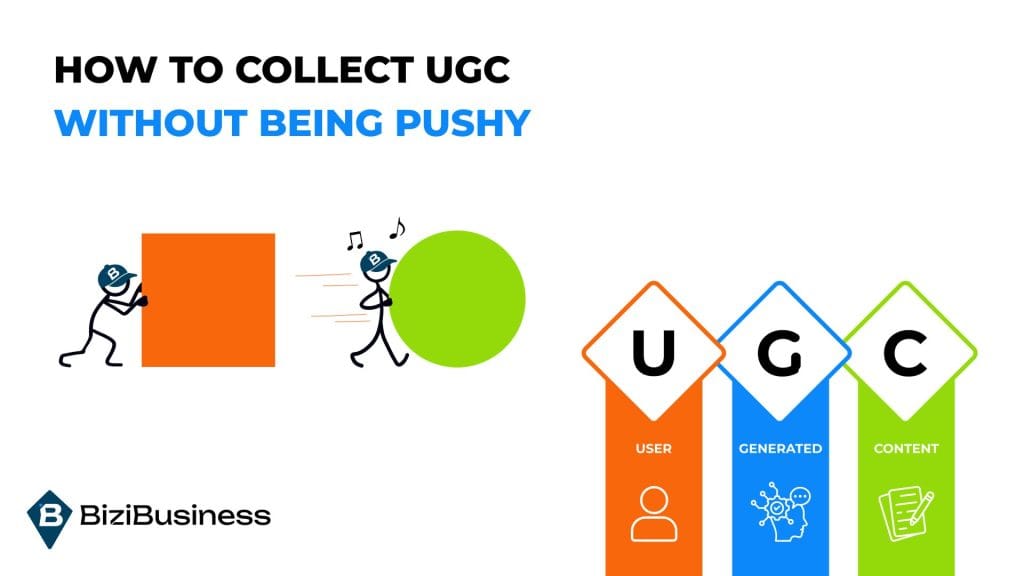
Hint: It’s easier (and more effective) than you think.
If you’re like most e-commerce brands, you know UGC works—but actually getting it from your customers can feel like pulling teeth.
The truth? Most people are happy to share. They just need the right nudge, at the right time, in the right way.
Let’s break down the non-pushy playbook for getting consistent, high-quality UGC:
Automate UGC Requests in Your Post-Purchase Flows
The easiest win: use your email or SMS automation to request content after the customer receives their order.
What to do:
- Send an email 5–10 days after delivery
- Keep the ask casual and friendly: “Loving your order? Show it off and tag us!”
- Include examples of past UGC to inspire them
Pro tip:
Add an incentive like 10% off their next order for tagging you or leaving a video review. Keep it optional, not pushy.
Launch a Loyalty or Referral UGC Incentive
Gamify the experience—people love earning rewards.
Examples:
- “Earn 100 points when you post a photo review”
- “Refer a friend and get featured on our Instagram”
- “Join our VIP squad: get perks when you share your story”
Platforms like Yotpo, Smile.io, and Stamped can automate these programs.
Run UGC Contests and Hashtag Challenges
Create a reason for your customers to create.
Ideas:
- Monthly “#MyBrandNameStyle” contest for the best outfit/video
- “Before & After Challenge” for wellness or beauty brands
- Holiday-themed UGC campaigns (“Share your cozy corner for a chance to win!”)
This boosts engagement and gets you tons of content in a short burst.
Use In-Platform Review Apps to Collect Media Content
Review platforms like:
- Loox
- Junip
- Judge.me
- Yotpo
…allow customers to easily upload photos and videos with their reviews—no extra effort required.
Embed these forms into your PDPs and emails so customers don’t need to leave your site.
Pro tip: Ask for video reviews specifically. Even 10-second ones can be gold for ads.
Leverage Influencers (Without a Huge Budget)
You don’t need Kylie Jenner. You need creators with 1K–10K followers who love your product and can make it shine.
How to do it:
- Gift your product in exchange for an honest review or demo
- Use platforms like Collabstr, MiniSocial, or Billo for micro-UGC creators
- Repurpose their content across your channels (with permission)
Why it works:
This blends influencer credibility with authentic UGC—it’s like content marketing with trust built-in.
UGC Rights: Always Ask for Permission
If someone tags you or posts about your product, don’t assume you can use it in ads or on your site. Always ask—and get it in writing.
The best UGC strategies are low-pressure, well-timed, and mutually beneficial. You’re not begging—you’re inviting your customers to be part of your brand story.
UGC Pitfalls to Avoid
Because one bad review, shady tactic, or missed detail can cost you conversions—and credibility.
UGC can be your brand’s secret weapon…
Or a liability if handled the wrong way.
A sloppy UGC strategy can lead to:
- Lost trust
- Legal trouble
- Poor performance
- And even SEO penalties
Here’s what to watch out for—and how to sidestep each landmine:
Using Fake Reviews or AI-Generated Content as “UGC”
Let’s be clear: consumers aren’t dumb. They can spot a phony testimonial or AI-scripted review from a mile away.
And when they do? You don’t just lose a sale—you lose trust.
Why this matters:
- Fake UGC violates FTC guidelines (and platforms like Amazon and Google can penalize you)
- Google’s algorithm rewards authentic, user-first content—not AI fluff pretending to be real people
What to do instead:
Focus on encouraging real, raw content from actual buyers—even if it’s not “perfect.” Authenticity wins.
Failing to Secure Proper Usage Rights
You might think it’s harmless to repost a tagged Instagram story or screenshot a tweet, but legally, it’s not that simple.
What’s at stake:
- You could face DMCA takedown notices, platform bans, or even legal action
- It’s not worth the risk—especially when customers are usually happy to say yes if you ask
Fix it fast:
Use tools like Archive or Pixlee to request and track usage permissions automatically.
Or, create a clear UGC rights agreement in your T&Cs and email follow-ups.
Relying on Outdated or Irrelevant Content
A review from 2019? A video where the packaging looks different? That kind of content can confuse or mislead shoppers—and hurt your conversions.
Why it’s a problem:
- Outdated UGC signals neglect
- Irrelevant or inaccurate content increases return rates and buyer hesitation
Solution:
Regularly audit your UGC library. Retire stale content.
Feature fresh reviews and up-to-date visuals that reflect your current offer.
Overloading Pages with UGC That Doesn’t Convert
More isn’t always better. Overstuffing PDPs or homepages with a flood of content can overwhelm shoppers and bury your most impactful testimonials.
Instead, focus on:
- Quality > quantity
- Prioritizing UGC that supports the decision-making process (e.g. review that solves an objection, video that shows the product in use)
Use analytics to identify which content moves the needle—and put that front and center.
Not Optimizing UGC for Mobile and SEO
Even if you’ve got killer UGC, it’s wasted if your customers can’t see or find it.
Common misses:
- Images not loading properly on mobile
- Videos not compressed or formatted
- UGC buried under dropdowns or tabs
- No schema markup on reviews for Google visibility
Fix it:
- Use responsive UGC displays
- Add alt text and metadata
- Apply review schema for rich snippets
- Test placements in both desktop and mobile views
Ignoring Diversity & Representation in UGC
UGC is a powerful way to show your brand is for everyone. But if all your content features the same type of customer, you’re unintentionally alienating segments of your audience.
What to do:
- Actively highlight diverse customers
- Encourage submissions from underrepresented groups
- Be intentional about what stories and visuals you feature
Representation sells. And it builds long-term brand loyalty.
UGC is powerful—but only when it’s authentic, inclusive, and strategically deployed.
Avoid these pitfalls, and you’ll build a content engine that earns trust, boosts SEO, and drives revenue at scale.
How UGC Supercharges SEO (and Fights Rising CPCs)
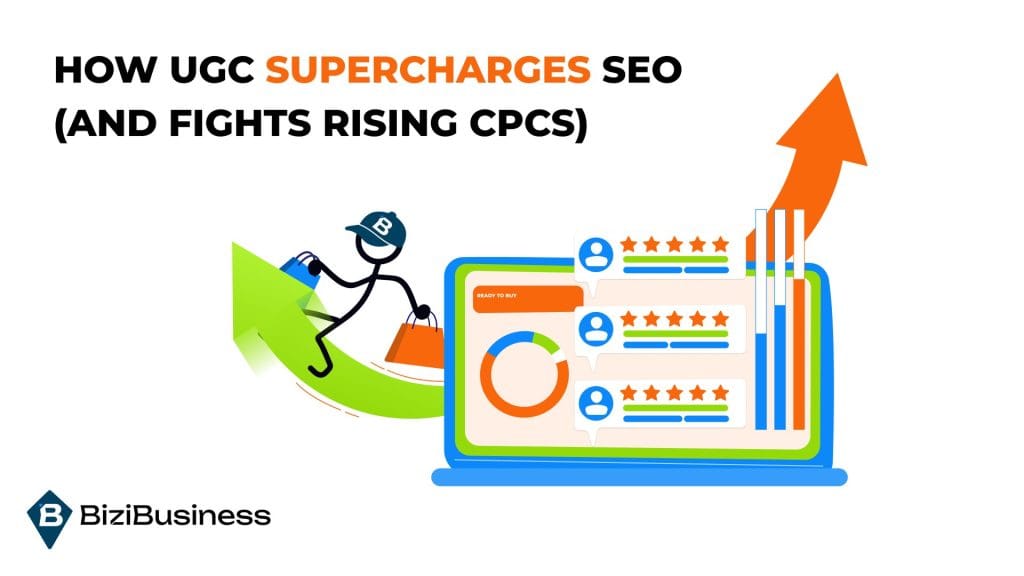
The best-performing content? It’s often written by your customers.
While paid ads are getting more expensive and less effective, user-generated content is quietly becoming an SEO powerhouse—and most e-commerce brands aren’t even scratching the surface.
Here’s how UGC can fuel your rankings, reduce your ad spend, and bring in high-converting traffic—organically.
1. It Creates a Constant Stream of Fresh, Keyword-Rich Content
Search engines love freshness. Every time a customer leaves a review, asks a question, or shares their experience, they’re naturally including long-tail keywords and conversational phrases you’d never think to optimize for.
2. It Helps You Win Rich Snippets & Review Stars
Google loves showing rich results like stars, FAQs, and images directly on the search page.
When you:
- Use schema markup on UGC (reviews, ratings, Q&A), and
- Display it cleanly on your site…
You increase your chances of showing up with:
- Rating stars
- People Also Ask content
- Thumbnail previews
These enhancements lead to:
- Higher CTRs
- More SERP real estate
- Better visibility over competitors
3. It Lowers Bounce Rates and Increases Time on Site
When visitors land on your page and see helpful, relatable content from other buyers, they stay longer. That sends powerful signals to search engines:
- “This page is helpful”
- “People are engaging with the content”
- “It’s worth ranking higher”
More time on site = higher rankings = more traffic.
4. It Reduces Your Dependency on Paid Ads (and Rising CPCs)
Let’s be real: Cost-per-click is at an all-time high.
But when your site is filled with UGC that:
- Answers real buyer questions
- Handles objections
- Showcases real results…
You rank for the exact keywords your target audience is Googling with purchase intent. That means:
- More free traffic
- Lower acquisition costs
- Higher conversion rates
Bonus: Google Loves “Experience”
With Google’s evolving algorithm placing more weight on E-E-A-T (Experience, Expertise, Authoritativeness, and Trust), UGC checks a major box:
Experience = real people talking about real usage.
No brand can fake that. And that’s why Google values it.
Your 30-Day UGC Activation Plan
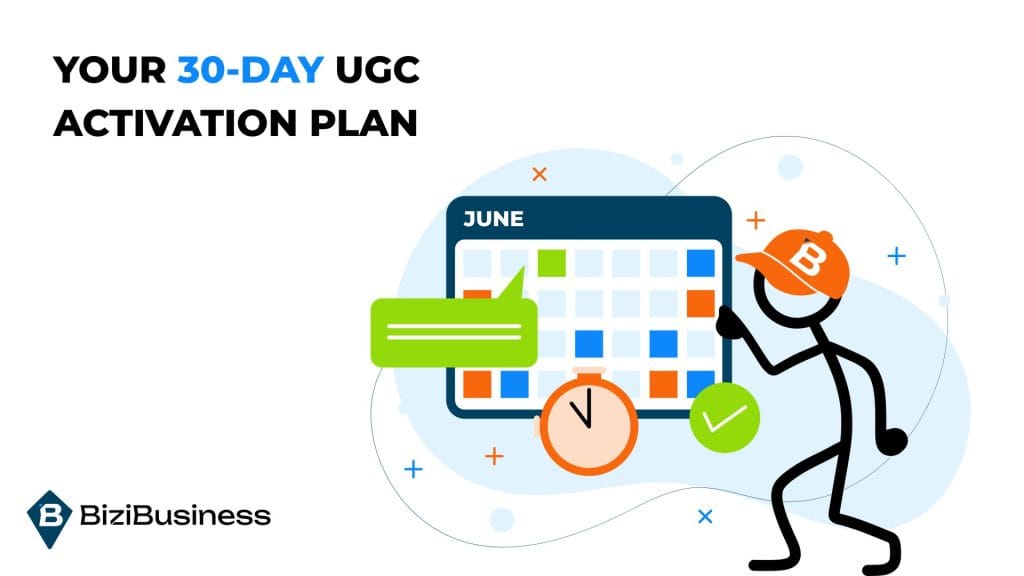
The exact steps to turn customer love into a full-funnel content engine.
You’ve seen what UGC can do.
Now it’s time to make it real—with a simple, no-fluff, 4-week action plan to activate UGC across your brand.
Whether you’re starting from scratch or scaling what’s already working, this roadmap will help you gather content, deploy it strategically, and drive results.
Week 1: Audit Your Existing UGC & Set Goals
What to do:
- Review current content: comb through tags, mentions, reviews, past campaigns
- Identify high-performing pieces (check engagement, conversions, saves, shares)
- Define your goal: Do you want to boost conversions, rank better, reduce CAC?
Tools to use:
- Instagram/TikTok search → YourBrandName hashtag
- Shopify reviews, Yotpo dashboard, or Google Reviews
- Google Analytics / Meta Ads Manager
Outcome:
Clarity on where you’re starting and what “success” looks like.
Week 2: Set Up UGC Collection Systems
What to do:
- Automate post-purchase review requests (email + SMS)
- Add photo/video prompts to your review forms
- Create a branded hashtag for easy UGC tracking
- Launch a soft contest: “Share your experience and get featured!”
Tools to use:
- Judge.me, Loox, Junip, or Yotpo
- Klaviyo or Postscript (for automated UGC requests)
- Archive or Pixlee for tracking/rights management
Outcome:
A system that passively collects high-quality, rights-approved UGC—without the manual lift.
Week 3: Deploy UGC Across Key Channels
What to do:
- Update homepage with a fresh UGC carousel or banner
- Add reviews and photos to PDPs and your checkout flow
- Launch 2–3 UGC-powered email campaigns
- Replace 1–2 paid ads with short-form UGC creatives
Channels to focus on:
- Website
- Ads
- Organic socials
Outcome:
UGC is now supporting real conversions, building trust, and improving performance across your funnel.
Week 4: Measure, Optimize & Scale
What to do:
- Review site engagement, click-through, and conversion metrics
- Track how UGC-powered emails and ads are performing
- Retire stale content and double down on top performers
- Reach out to top contributors and invite them into your “UGC inner circle” (VIPs, creators, superfans)
Tools to use:
- Google Analytics (engagement, bounce, conversion rate)
- Meta Ads Manager (ROAS, CTR, CPC)
- Review platform dashboards
Outcome:
A data-backed understanding of what works—so you can build a repeatable UGC flywheel.
Final Thoughts: UGC Isn’t Optional—It’s Essential
User-generated content isn’t just a “nice to have” anymore. In 2025, it’s a non-negotiable for any e-commerce brand that wants to stay visible, build trust, and convert on autopilot.
Think about it:
- Shoppers trust people more than brands.
- UGC drives higher engagement, longer site visits, and stronger SEO.
- It reduces your dependency on ads while fueling your full funnel with authentic, performance-proven content.
From reviews and reels to real customer stories, UGC is the content that keeps working even when you’re not.
Subscribe to Newsletter
Unlock your creativity and stay up to date on marketing tips
